Arrange the following alcohols :
In the decreasing order of their boiling points.
(1) n−Butylalcohol
(2) sec−Butylalcohol
(3) tert−Butylalcohol.
To arrange the given alcohols (n-Butyl alcohol, sec-Butyl alcohol, and tert-Butyl alcohol) in decreasing order of their boiling points, we need to consider the structure of each alcohol and how it affects their boiling points.
1. Identify the Structures of the Alcohols:
- n-Butyl alcohol (1-butanol) has the structure: CH3-CH2-CH2-CH2-OH (primary alcohol).
- sec-Butyl alcohol (2-butanol) has the structure: CH3-CH(OH)-CH2-CH3 (secondary alcohol).
- tert-Butyl alcohol (2-methyl-2-propanol) has the structure: (CH3)3C-OH (tertiary alcohol).
2. Understand the Impact of Structure on Boiling Points:
- The boiling point of alcohols is influenced by hydrogen bonding, which occurs due to the presence of the hydroxyl (-OH) group.
- Primary alcohols generally have higher boiling points than secondary alcohols, which in turn have higher boiling points than tertiary alcohols. This is because primary alcohols can form more extensive hydrogen bonding due to their linear structure, while branching in secondary and tertiary alcohols reduces the surface area available for intermolecular interactions.
3. Rank the Alcohols Based on Their Boiling Points:
- n-Butyl alcohol (primary): Highest boiling point due to less branching and more hydrogen bonding.
- sec-Butyl alcohol (secondary): Moderate boiling point due to some branching.
- tert-Butyl alcohol (tertiary): Lowest boiling point due to significant branching, which reduces hydrogen bonding.
4. Final Arrangement:
- The order of boiling points from highest to lowest is:
1. n-Butyl alcohol
2. sec-Butyl alcohol
3. tert-Butyl alcohol
Conclusion:
The decreasing order of boiling points for the given alcohols is:
1. n-Butyl alcohol (highest)
2. sec-Butyl alcohol
3. tert-Butyl alcohol (lowest)
- n-Butyl alcohol (1-butanol) has the structure: CH3-CH2-CH2-CH2-OH (primary alcohol).
- sec-Butyl alcohol (2-butanol) has the structure: CH3-CH(OH)-CH2-CH3 (secondary alcohol).
- tert-Butyl alcohol (2-methyl-2-propanol) has the structure: (CH3)3C-OH (tertiary alcohol).
- The boiling point of alcohols is influenced by hydrogen bonding, which occurs due to the presence of the hydroxyl (-OH) group.
- Primary alcohols generally have higher boiling points than secondary alcohols, which in turn have higher boiling points than tertiary alcohols. This is because primary alcohols can form more extensive hydrogen bonding due to their linear structure, while branching in secondary and tertiary alcohols reduces the surface area available for intermolecular interactions.
- n-Butyl alcohol (primary): Highest boiling point due to less branching and more hydrogen bonding.
- sec-Butyl alcohol (secondary): Moderate boiling point due to some branching.
- tert-Butyl alcohol (tertiary): Lowest boiling point due to significant branching, which reduces hydrogen bonding.
- The order of boiling points from highest to lowest is:
1. n-Butyl alcohol
2. sec-Butyl alcohol
3. tert-Butyl alcohol
The decreasing order of boiling points for the given alcohols is:
1. n-Butyl alcohol (highest)
2. sec-Butyl alcohol
3. tert-Butyl alcohol (lowest)
Topper's Solved these Questions
- GENERAL ORGANIC CHEMISTRYBOOK - CENGAGE CHEMISTRY ENGLISHCHAPTER - GENERAL ORGANIC CHEMISTRYEXERCISE - Subjective
11 Videos
- GENERAL ORGANIC CHEMISTRYBOOK - CENGAGE CHEMISTRY ENGLISHCHAPTER - GENERAL ORGANIC CHEMISTRYEXERCISE - Concept
17 Videos
- GENERAL ORGANIC CHEMISTRYBOOK - CENGAGE CHEMISTRY ENGLISHCHAPTER - GENERAL ORGANIC CHEMISTRYEXERCISE - Analytical and Descriptive
1 Videos
- CLASSIFICATION AND NOMENCLATURE OF ORGANIC COMPOUNDSBOOK - CENGAGE CHEMISTRY ENGLISHCHAPTER - CLASSIFICATION AND NOMENCLATURE OF ORGANIC COMPOUNDSEXERCISE - Analytical and Descriptive Type
3 Videos
- HYDROGEN, WATER AND HYDROGEN PEROXIDEBOOK - CENGAGE CHEMISTRY ENGLISHCHAPTER - HYDROGEN, WATER AND HYDROGEN PEROXIDEEXERCISE - Subjective Archive (Subjective)
3 Videos
Similar Questions
I. Arrange the compounds of (a) in the order of decreasing boiling points and (b) in the order of decreasing solubility in water.
(A) (1) Ethanol, (2) Propane, (3) Pentanol
(B) (1) Butane, (2) 1,2,3-Pentane triol, (3) Butyl alcohol
(C) (1) Pentane, (2) Pentanol, (3) Hexanol
II. Arrange the following in the decreasing order of their boiling points.
(A) (1) C3H8, (2) C2H5OH, (3) (CH3)2O, (4) HOH2C−−−−CH2OH
(B) (1) 3-pentanol, (2) n-Pentane, (3) 2,2-Dimethyl propanol, (4) n-Pentanol
III. Arrange the following alcohols (a) in the decreasing order of their boilling points and (b) in the decreasing order of their solubility in water.
(1) n-Butyl alcohol
(2) sec-Butyl alcohol and
(3) tert-Butyl alcohol
IV. Arrange the following compounds in the order of their increasing boiling points.
(1) CH3COC1 , (2) (CH3CO)2O , (3) CH3CONH2 , (4) CH3COOH
View SolutionArrange the following in the decreasing order of their boiling points:
(i) n-Butyl chloride (ii) Isobutyl chloride (iii) ter-Butyl chloride.
View Solution
Knowledge Check
The decreasing order of boiling points of the following alcohols is
A3-methylbutan-2-ol > 2 - methylbutan-2-ol > pentan-1-olBpentan-1-ol > 3- methylbutan-2-olC2-methylbutan-2-ol > 3-methylbutan-2-ol > pentan-1-olD2-methylbutan -2-ol < pentan -1-ol < 3-mehtylbutan-2-ol
Arrange the following alcohols in the decreasing order of
dehydration with conc. H2SO4.
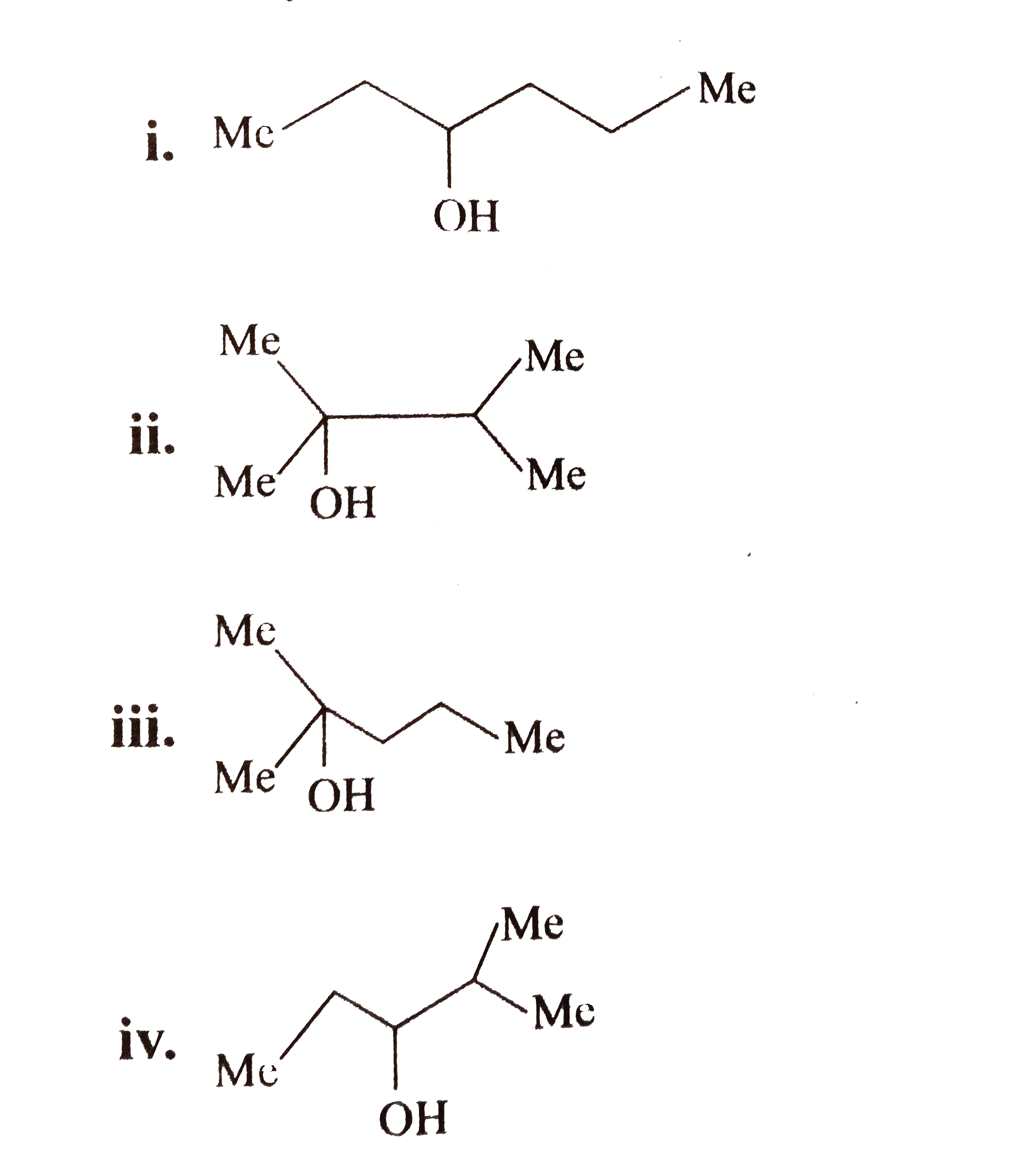
View SolutionArrange the following alcohols in the decreasing order of their ease of dehydration with H2SO4.
a.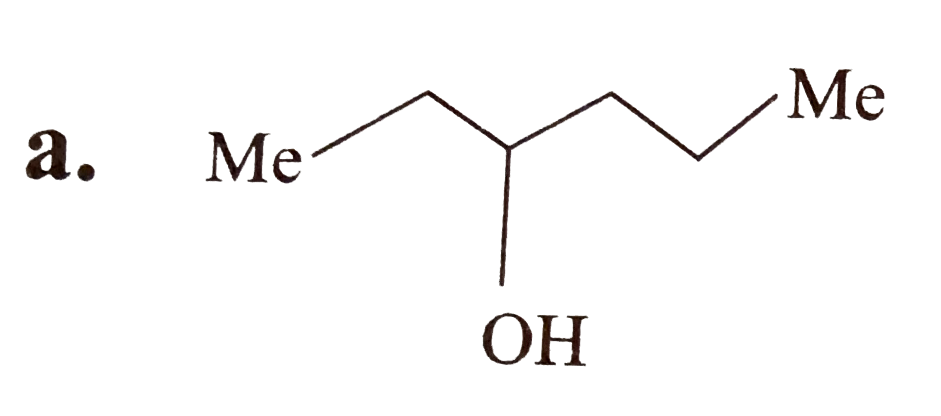
b.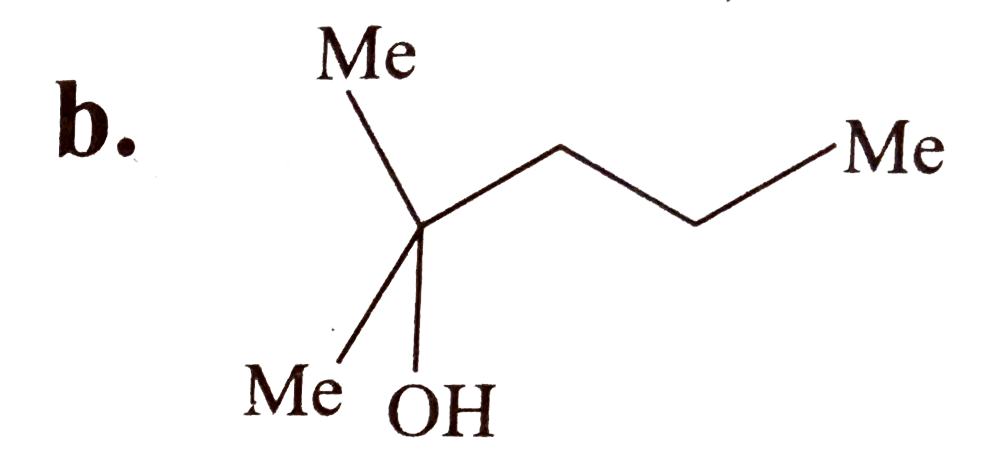
c.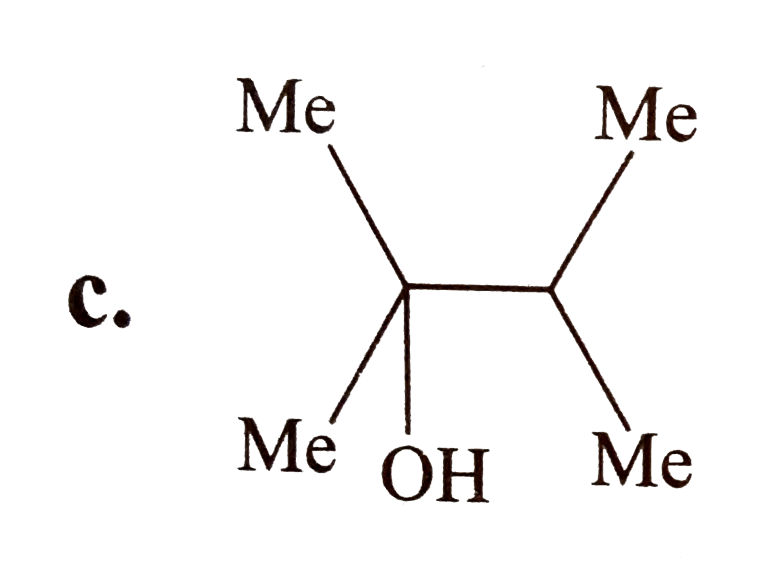
d.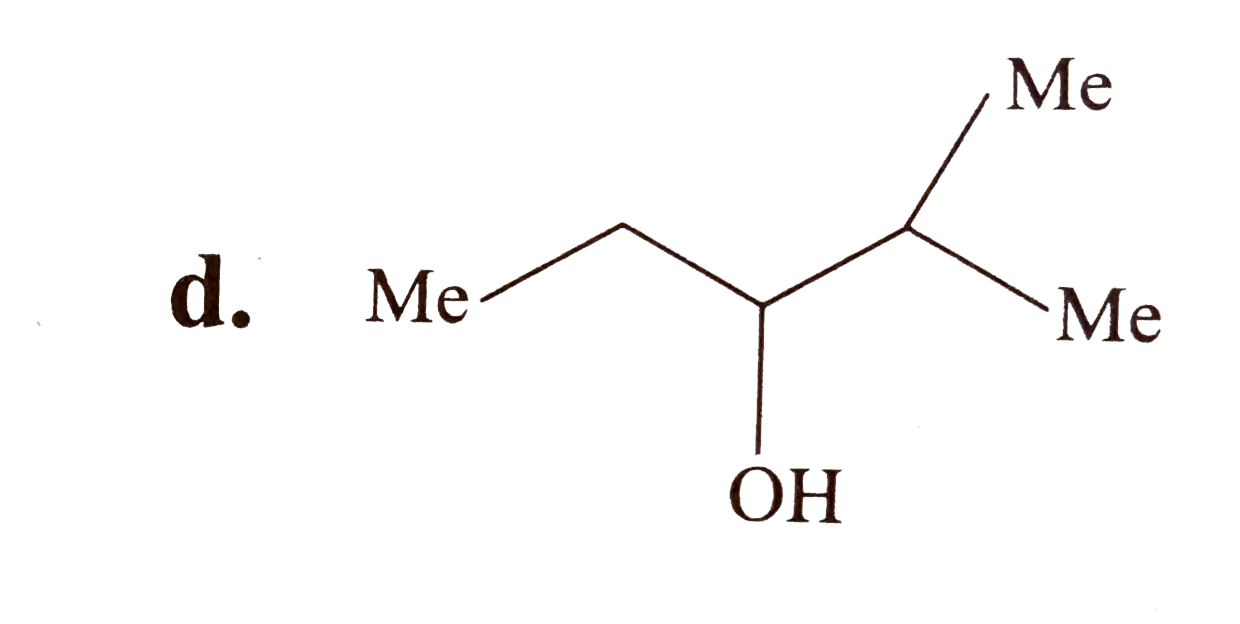
e.
View SolutionArrange the following liquids in the decreasing order of the rate of evaporation : water, ethyl alcohol, benzene, .
View SolutionArrange the following alcohols in the decreasing order of reactivity towards
Lucas reagent
(1) 1-Butanol
(2) 2-butanol
(3) 2-Methyl-2-propanol.
View SolutionAcidic dehydration of the following alcohols is in the order :
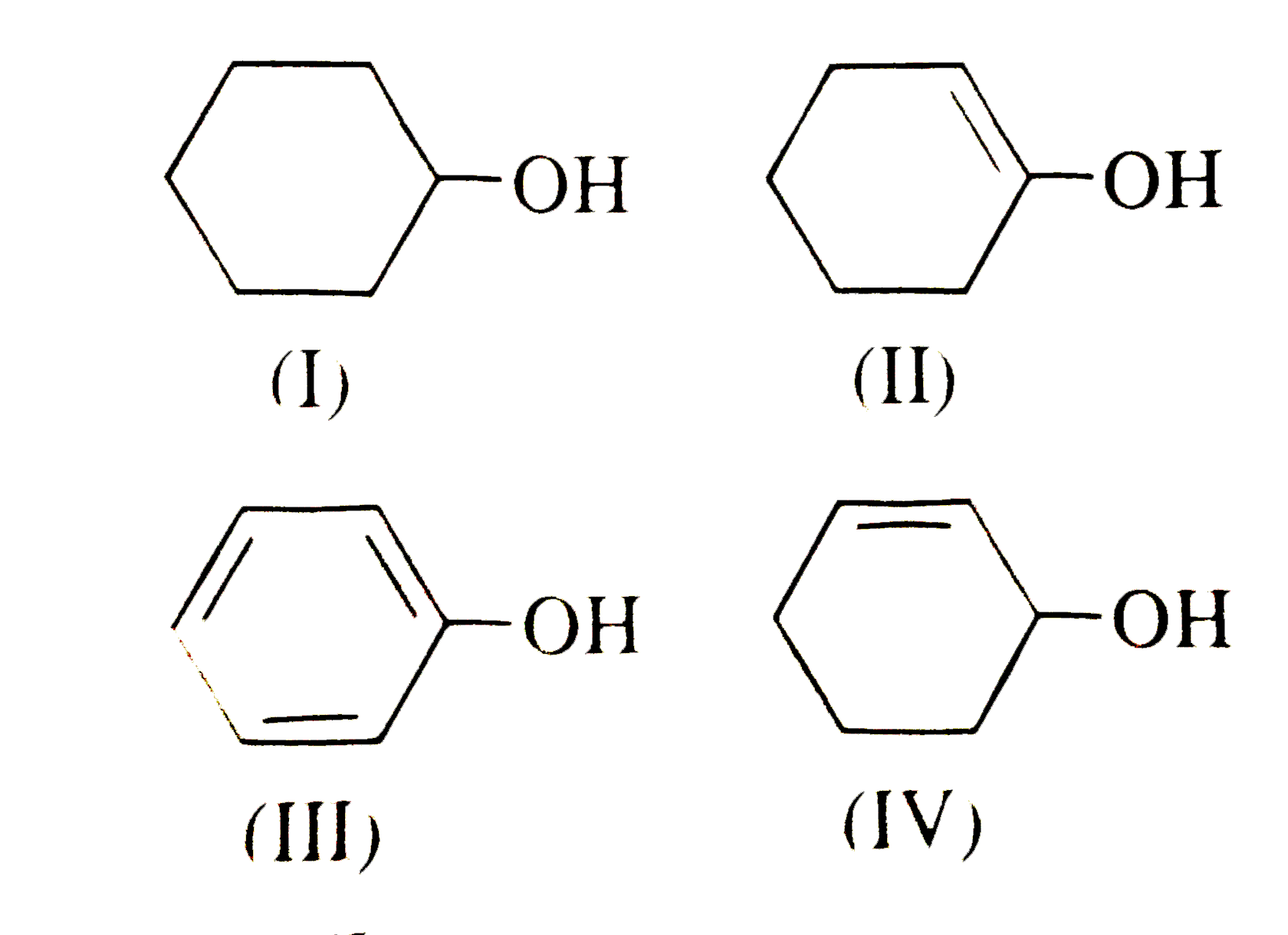
View SolutionCompare the boiling points of
1. n - butylamine
2. n - butyl alcohol
3. pentane
View SolutionArrange the following alcohols in order of reactivity towards gaseous HBr :

View Solution
